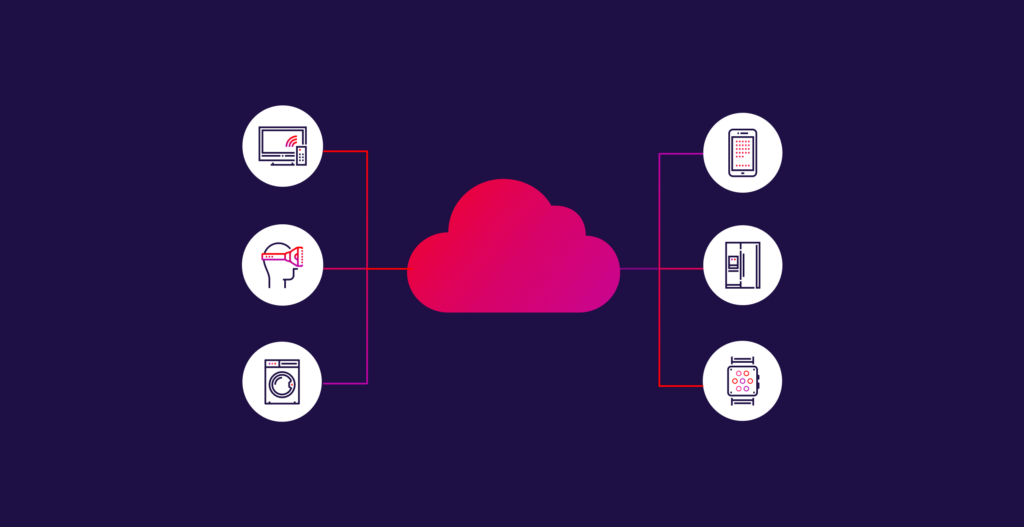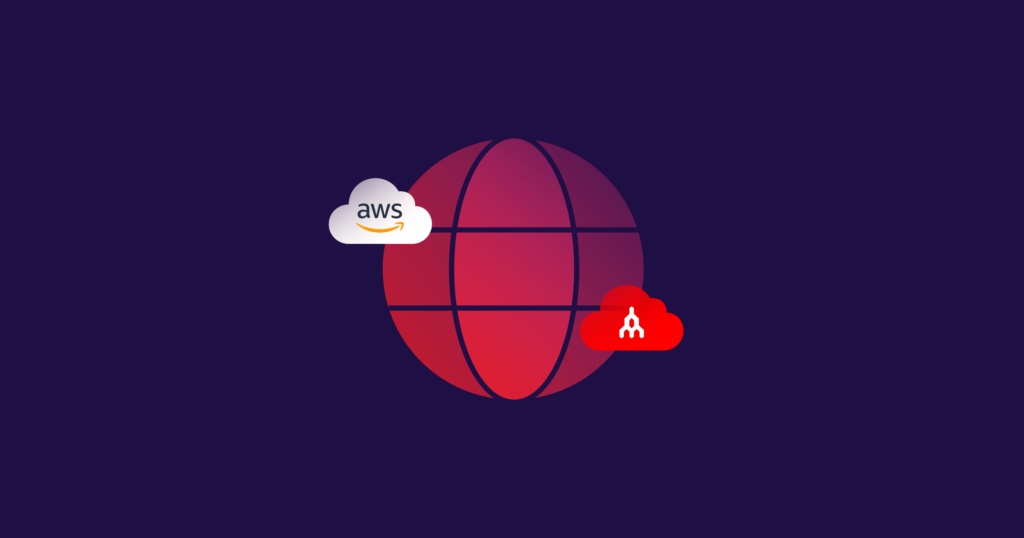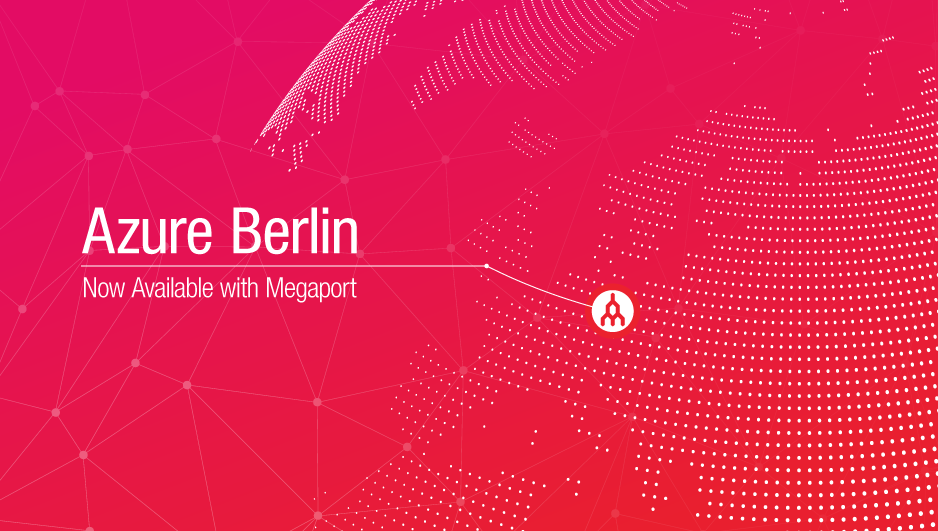
Where IoT Fits in Your Cloud Network
- March 15, 2022
Internet of Things (IoT) is a buzzword constantly growing in popularity – but what does it really mean, and how does it apply to your network?
You pause your virtual assistant’s streaming music to call your daughter. She’s at a bus stop, tracking the bus’s location on her phone with real-time accuracy. You remind her to use her diabetes device to check and track her glucose levels. Then you hit the gym to rack up points on your fitness watch and treat yourself with a snack, paid for with your digital wallet. That afternoon, on your tablet, you host a video conference on hybrid cloud technology with a potential client. All of these computer-embedded products, constantly sending and receiving data, form the Internet of Things (IoT).
IoT devices are embedded with sensors that interact with internal circuitry and the external world, transmitting data. In 2021, even with COVID-related disruptions, people worldwide used more than 10 billion IoT devices – and that number is predicted to grow to more than 25.4 billion by 2030. Through that staggering increase, IoT devices are expected to generate 73.1 ZB (zettabytes) of data by 2025 . The healthcare, manufacturing, hospitality, travel, agriculture, and retail sectors are major pillars of this IoT revolution, aided by 5G technology and cloud-based computing. Government is following closely behind these sectors; for instance, as local governments meet CO2 emission reduction goals, they’re adding electric “smart” vehicles to their fleets.
IoT data streams are the seeds of big data, a system integral to IoT and cloud storage. Built In states , “Big data analytics platforms take unstructured data… collected by IoT devices, and organize information into digestible datasets that inform companies how to optimize their processes.” As part of a symbiotic relationship, big data uses IoT information to provide users with projections, patterns, and analytics on human or other behavior. Its AI-enhanced insights and machine learning can help to guide planning and aid real-time needs (where is that bus?).
IoT meets cloud computing
Big data can be stored in company servers, but increasingly, it’s being stored in the cloud. For IoT-enhanced companies wanting to use the cloud to extract insights from their data, a Software Defined Network (SDN) provides tools to ease the transition to cloud computing. Using a global, private SDN like Megaport’s offers these benefits for IoT data storage:
- Easily handles large amounts of data: Megaport’s scalable Network as a Service (NAAS) allows companies to connect privately to major Cloud Service Providers (CSPs), including AWS , Azure , or Google Cloud , with the ability to turn up bandwidth on demand to support large data migrations.
- Is cost-effective: Megaport’s pay-as-you-go pricing structure reduces the total cost of ownership (TCO) for a customer’s cloud network.
- Can reduce latency: Not only does Megaport’s NaaS provide far more reliable network speeds than those offered by the public Internet, Megaport Cloud Router (MCR) also reduces hair-pinning to and from on-premises environments for multicloud architectures.
IoT and edge computing
Interconnected IoT devices form an “ecosystem” – in agriculture, for example, biochips embedded in a herd of cows will transmit and respond to the biochips around them when those cows are gathered closely together. These devices will also connect to an IoT gateway, which is an edge device linking to internal servers or the cloud. Because the devices can work and communicate independently from users, companies leveraging IoT often benefit from convenience, increased automation, and reduced costs.
Get better edge-to-cloud connectivity with Megaport Virtual Edge (MVE). Learn more here.
In edge computing for IoT, it’s common for organizations to process data in edge facilities, close to the action, for the speed and ease of control. But to manage the sheer amount of data being exchanged, an SD-WAN network with high-performance edge-to-cloud connectivity is crucial. This is where Megaport Virtual Edge (MVE) comes in.
This on-demand Network Function Virtualization (NFV) service gives you direct, private branch-to-cloud connectivity via our SDN, enabling you to deploy SD-WAN gateways, virtual routers, and integrated transit gateways in minutes. Plus, with our SD-WAN integration partners making up more than 70 percent of the total SD-WAN market, it’s easy to start improving the performance of your IoT-integrated cloud network.
Heightened need for security
Distributed connectivity can be both a plus (instant software updates across units) and a potential risk (widespread hacking). Migrating data from servers to the cloud through the open internet heightens the risk as it leaves data open to security breaches through Border Gateway Protocol (BGP) issues; this is something to be especially wary of in sectors that handle highly sensitive data, like healthcare or banking.
In 2019, NETSCOUT’s “Threat Intelligence Report” estimated “the average IoT device gets attacked just five minutes after it goes live .” Symantec reports that 75% of IoT attacks occur through routers, averaging 5,200 attacks per router each month. To combat these security concerns, using a private, ISO/IEC27001 certified SDN is a great option as it removes your IoT data from the public internet, where it’s most vulnerable. Not only does Megaport have this certification, our NaaS offering also includes secure features like direct, private peering and authentication and encryption protocols .
**Managing too much of a good thing
**
While IoT provides near-unlimited potential, all of this collected data often leaves enterprises with the question: what to do with these seemingly endless datasets? Think of IoT like an orchestra: You can collect all the instruments in an orchestra (the data), but if musicians (the users) lack experience, they might perform out of sync and out of tune – and you’ve still paid for their performance. While it’s great to aspire to what multimillion-dollar corporations achieve with big data, most corporations have to weigh their costs and staff competencies.
If you’re wondering how to affordably and successfully implement an IoT-integrated cloud network, start by prioritizing your needs and allocating funds to big data projects that will most likely lead to growth or solve other urgent problems. It can also be worth keeping up with innovations in AI and machine learning , which may have an impact on the development of your network. Finally, look to leverage a NaaS like Megaport, which can simplify your network management and give you control over your network costs.
Whether you’ve integrated IoT devices throughout your company or are still thinking about building them in, there’s no doubt they’re creating a permanent global shift to “smart cities, smart homes, and smart health .” Wherever you may be on your IoT journey, Megaport’s SDN can increase the efficiency of your IoT-integrated cloud network so you can focus solely on the insights and rewards that come with big data.
Stay Updated
Keep up to date on Megaport in the news by following us on social media at:
Twitter: @megaportnetwork
LinkedIn: @megaport
Facebook: @megaportnetworks


